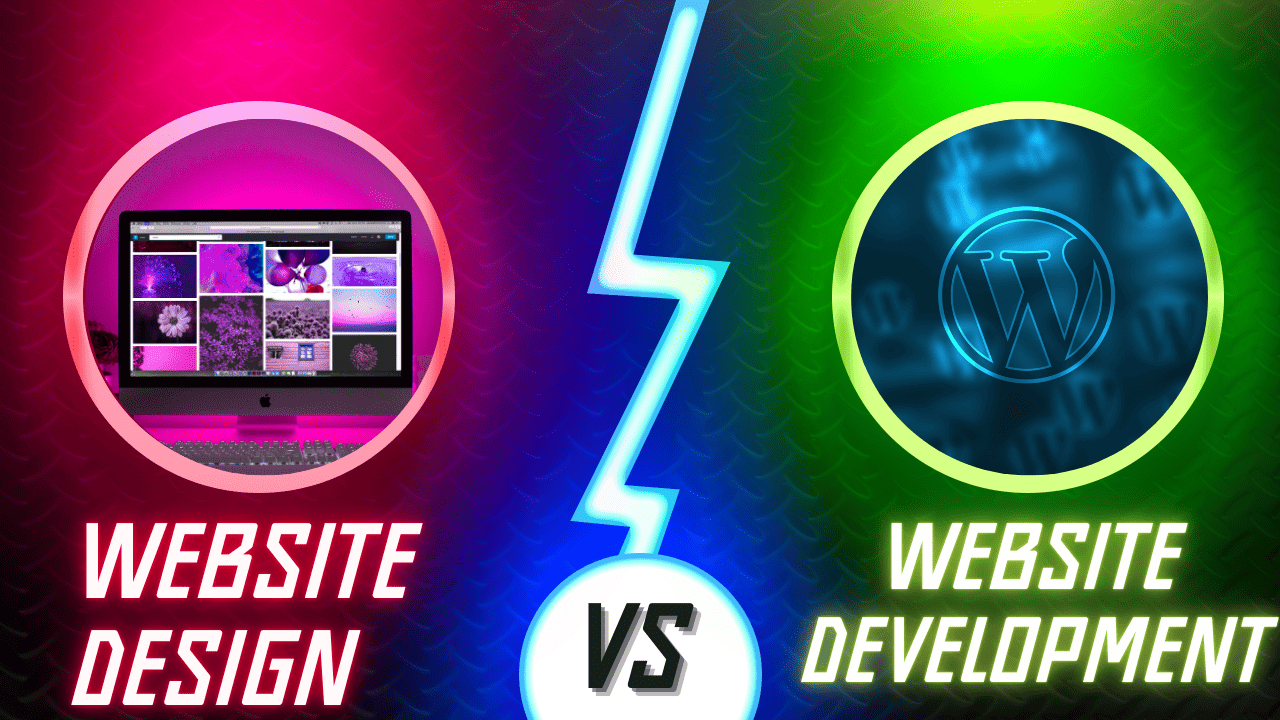A well-designed and functional website is a must for every business, brand, and individual who want to have a powerful online presence. However, if you want to build a website, you probably come across two terms very often used interchangeably: website design and website development. While they may sound alike, website design and website development are two different processes, both critical to creating an efficient and user-friendly website. Knowing the difference helps you verify that your website appeals visually and also technically.
Website design: The process of constructing the visual element
Website design refers to the visual and experiential components of a website. It includes everything that a user sees when visiting a website — the layout, the color scheme, fonts, graphics, and the overall visual style. The goal of designers is to deliver an intuitive and visually engaging experience, where users are guided smoothly through the site while the brand’s message is conveyed. Put simply, website design is the process of creating an appealing and efficient online space for visitors.
The Essential Factors of Web Page Design:
Styling and Formatting: Designers decide how the content will be styled and formatted. They plan out where the placement will be that makes sense and flows text, images, videos, buttons, and other elements. Design should keep user experience in mind and provide a layout to find information easily.
Visual aesthetics: Website designers have to select color schemes, fonts, and images that reflect the identity of the brand and make the site visually appealing. A website’s aesthetics can significantly influence a visitor’s perception of the brand, so designers work to make the design match the target audience and industry.
User Experience (UX) and User Interface (UI): The website designers strive to make the website user-friendly. They make sure the site is navigable, responsive on all devices, and also visually coherent. Good UX/UI design improves user satisfaction, resulting in increased engagement and conversion rates.
Responsive Design: With the mobile-first world we are in, designers need to make sure the website automatically adjusts to the sizes of various devices. Responsive design ensures users know they’re using the same service regardless of whether they’re browsing on a desktop, tablet, or mobile device.
THE BACKEND/WEBSITE DEVELOPMENT: The Website’s Backbone
Website Design vs. Website Development While website design centers on the look and feel of the site, website development relates to the back-end work to make the site functional. The developers then take that design, write the code that makes the design a reality, and make sure the website works correctly across all platforms and browsers. Website development is generally divided into front-end development and back-end development.
Important Aspects of Website Development:
Front-End Development: Front-end developers work on the part of a website that users see and interact with. Web developers use programming languages such as HTML, CSS, and JavaScript to abstract the design into a working code. This side of development is pretty much directly related to website design; however, it incorporates functionality into the visual elements. A front-end developer makes sure the website functions and performs as desired.
Back-End Development: This aspect of web development pertains to the server-side parts of a website. It involves coding for databases, server configs, and application logic so the website operates as intended. The back-end, through a series of processes, communicates with other systems, stores data, and handles requests. Some popular technologies used for back-end development are programming languages such as PHP, Python, and Ruby, and frameworks such as Node.js.
CMS (Content Management Systems): A large proportion of web pages are based on CMS platforms such as WordPress, Joomla, or Drupal. Extensions of these platforms, like plugins, are written by developers working with various other platforms. This means that the content is configured properly and the CMS can fulfill the particular demands of the website, helping users to update and manage the content easily.
Database Management: Websites usually have to store and retrieve data like user information or product listings. Back-end developers configure and maintain databases (e.g., MySQL, MongoDB), allowing websites to interact with data in real time.
Website Design vs. Website Development: The Key Differences:
Focus Area: Website design focuses on the website look and feel; website development focuses on the technical aspects and the functionality. Design focuses on the aesthetics of the UI, whereas development takes care of the coding and functionality of the site.
Skill Sets: Website designers are usually well-versed in aesthetic principles with a background in graphic design and UI/UX design. As opposed to website developers who specialize in programming languages, databases, and other technical details involved with developing a web site.
Sketch, Adobe, XD and provisioning to build mockups and design prototypes. In contrast, developers utilize coding languages (HTML, CSS, JavaScript) and frameworks (e.g., React, Angular) to create the functionality and infrastructure of the site.
Ultimate objective: To develop an attractive, user-friendly, and enjoyable experience for users during a website design process. The intent behind the process of creating a website is to do one thing: make sure it all works, loads slowly, and is seen across all browsers and devices.
Design and Development both matter:
Web design and development are the two critical components in building an effective website. A website without good design can come across as clunky or amateurish, which will repel visitors. No matter how great a design is, without solid development it can easily fall apart, leading to slow load times, broken features, or a horrible user experience.
Design and development must work together for a website to truly be effective. The designers provide the vision, and the developers realize it. For a visually appealing and completely functional website, it’s really important for both teams to collaborate with each other.
Conclusion:
Design and development are intertwined when it comes to building a website; they both work together, serving two different purposes. Website design involves shaping the visual and interactive aspects of the site, and website development involves making sure that the back-end technical components connect as intended. For anyone who is intending to make a website that doesn’t just look good but also works well, it is crucial to realize the difference between these two. A combination of the two creates results not only visually appealing to the customer but also with the technical specifications behind it needed to deliver the service.


Leave a Reply